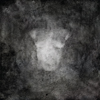Aluk Todolo, "Finsternis"
 Somehow managing to simultaneously cover krautrock, black metal, noise, and post-rock, this trio's second full length album is somewhat of a departure from the largely drone oriented URSK series on Utech, yet keeps enough of that ethos and ambience to not seem out of place, but stands out as a more metallic shard amidst the warm murkiness.
Somehow managing to simultaneously cover krautrock, black metal, noise, and post-rock, this trio's second full length album is somewhat of a departure from the largely drone oriented URSK series on Utech, yet keeps enough of that ethos and ambience to not seem out of place, but stands out as a more metallic shard amidst the warm murkiness.
Consisting of five tracks that largely segue into one another, Finsternis begins with "Premiere Contact" and sets the intent right away: a quick blast of low-fi electronic noises and a razor sharp bass and drum rhythm that is simple, but mechanical enough to channel the best of krautrock and its antecedents such as Metal Box. Below this lock-step rhythm is a consistent level of guitar abuse and squall that mostly stays lurking behind the rhythm like some beast ready to escape. As the track winds to a close it’s no longer restrained and becomes heavier and more pronounced, closing with a blast of harsh guitar noise.
"Deuxieme Contact" picks up right where the first part left off, opening with the continued guitar abuse and a blast beat that’d fit in on the best of grindcore records. Otherwise the robotic rhythm section stays the same as before, but being supplanted by the jagged guitar squalls and noise that were lingering before. It stays rather similar, but has a more violent, dark edge throughout.
The middle track "Totalite" is the one that is most disconnected from the first and latter halves. Unlike the first two pieces, the emphasis is much more on the lower end of the equalizer spectrum, pegging out the levels on bass and lower register guitar chords over controlled feedback and filtered low frequency noise. All the while a constant kick drum thump like the opening to "Iron Man" thuds away, recorded so loudly and sharply that one can almost feel the skins being hit. While largely dissonant, the track sometimes blasts into more straight ahead rock pastiches, though buried in reverb and darkness.
The latter two pieces channel more of the black metal edge to the Aluk Todolo sound, largely in its production that maxes out the mid and upper range of the spectrum, along with pounding cymbals and guitar noise that shares as much with the noise scene as it does with metal. It’s a slow, meandering piece that plods away with relatively minor changes as a whole, but starts to unravel as it transitions into the final track, "Quatrieme Contact." It picks up where the previous left off, but allows the guitar noise to retract some, allowing what sounds more like synths to enter, though the noise comes back with a vengeance in the midsection. However, as the track (and album) winds to its close, the noise retreats and the mix becomes more sparse: the remaining guitar and rhythm becomes the focus and takes on more of a post-rock quality rather than the dark trudging metal that came before.
While the black metal scene is thought of as being entrenched in its preference for flat percussion and simple musical structures that always take a backseat to an illegible logo or incantations to various demons and deities, here the best elements of it (dissonant, yet somewhat musical noise) are married to a sharp rhythm section that feels so much more than just frustrated Norwegian teenagers with a four track. It’s a complex combination that can be studied as well as headbanged to.
samples:



